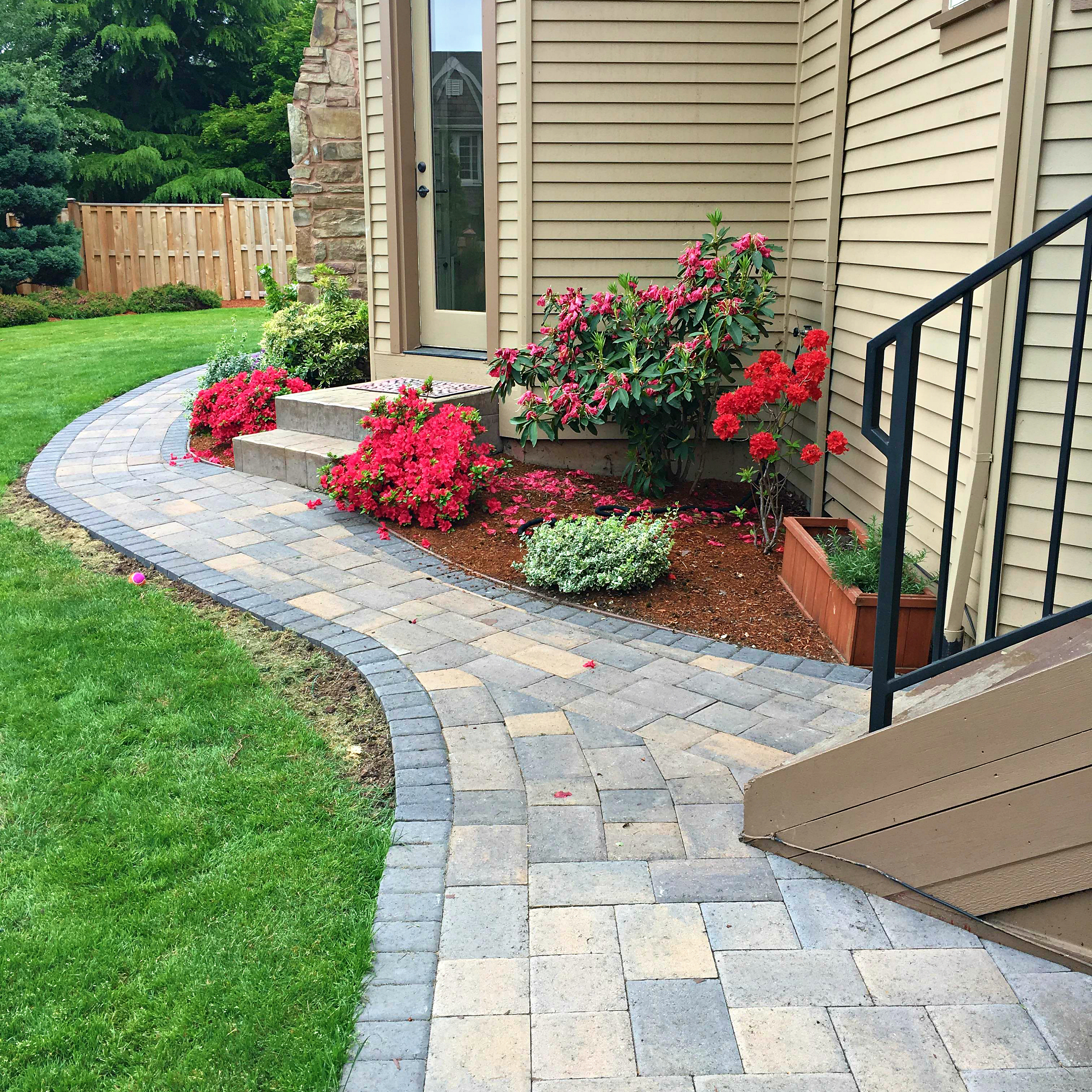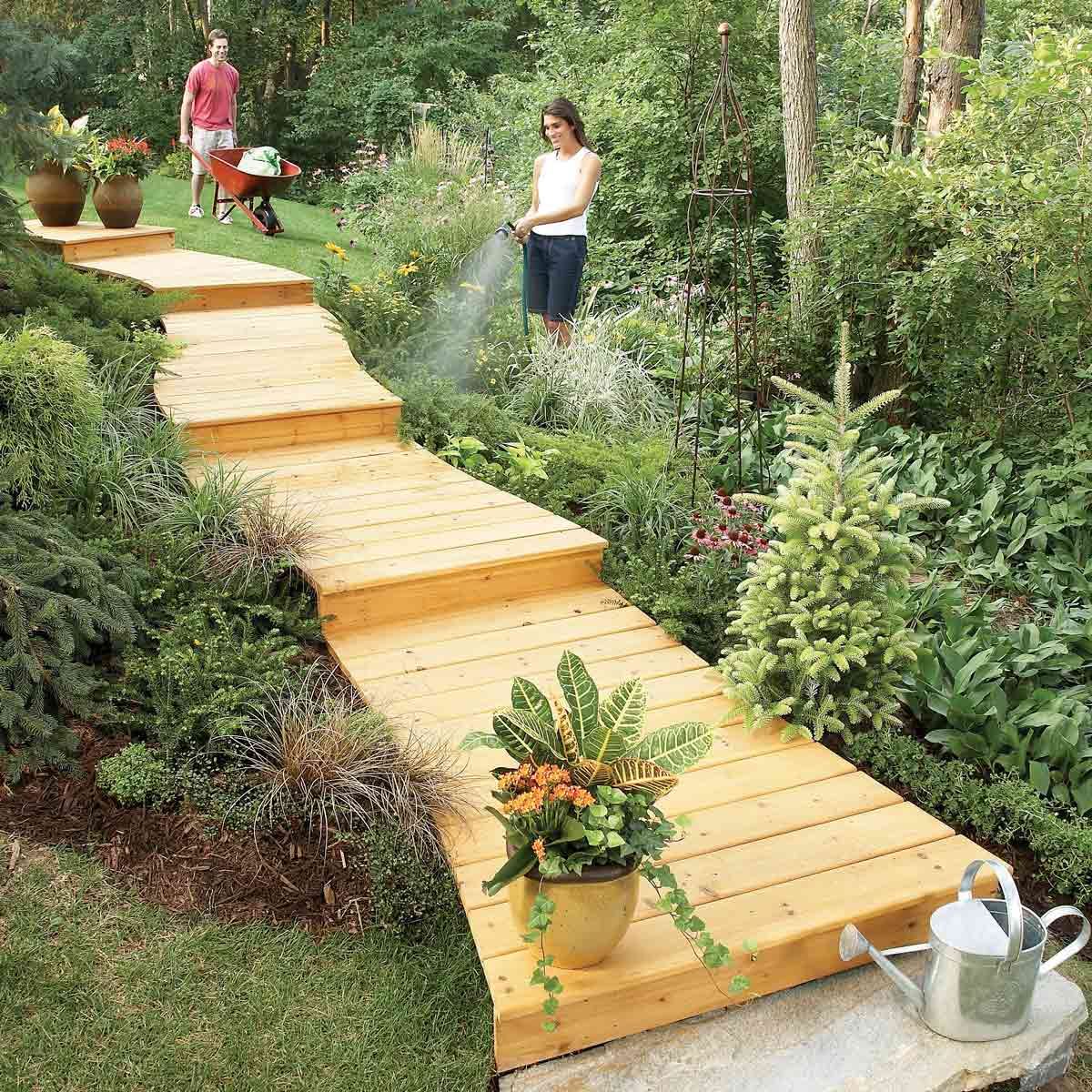Walkway Ideas That Will Transform Your Yard
Walkway Ideas That Will Transform Your Yard
A walkway is a great way to add beauty, functionality, and value to your yard. It can provide a safe and easy way to get around your property, and it can also be a focal point of your landscape design. Whether you're looking for a simple, low-maintenance walkway or a more elaborate one with curves and patterns, there are plenty of walkway ideas to choose from.
In this blog post, we will discuss some of the most popular walkway ideas, as well as some tips on how to choose the right materials and design for your needs. We will also provide some helpful resources for DIY walkway projects.
Choosing the Right Materials
The first step in creating a walkway is to choose the right materials. There are many different materials that can be used for walkways, each with its own advantages and disadvantages. Some of the most popular materials include:
- Brick: Brick is a durable and attractive material that can add a touch of elegance to your yard. It is also relatively easy to maintain.
- Concrete: Concrete is a strong and versatile material that can be used to create a variety of walkway designs. It is also relatively inexpensive.

- Pavers: Pavers are made from a variety of materials, including brick, concrete, and stone. They are available in a wide range of shapes and sizes, so you can create a unique walkway design.

- Gravel: Gravel is a low-maintenance material that is perfect for areas with heavy foot traffic. It is also relatively inexpensive.

- Wood: Wood is a natural and beautiful material that can add a touch of warmth to your yard. However, wood is not as durable as other materials and requires more maintenance.

Designing Your Walkway
Once you have chosen your materials, you can start designing your walkway. There are many different factors to consider when designing a walkway, such as the size of your yard, the traffic flow, and the overall style of your home.
Here are a few tips for designing your walkway:
- Start with a plan: Before you start digging, it is important to have a plan for your walkway. This will help you determine the size and shape of your walkway, as well as the materials you will need.
- Consider the traffic flow: When designing your walkway, it is important to consider how people will be using it. For example, if you have a lot of foot traffic, you will need to make sure your walkway is wide enough.
- Choose the right materials: The materials you choose will affect the look and feel of your walkway. If you want a formal walkway, you might choose brick or concrete. If you want a more casual walkway, you might choose gravel or wood.
- Add some personality: Your walkway is a great opportunity to add some personality to your yard. You can do this by using different colors or patterns of materials, or by adding plants or flowers along the sides of your walkway.
Installing Your Walkway
Once you have designed your walkway, you can start installing it. If you are not comfortable doing this yourself, you can hire a professional to do it for you.
Here are the basic steps involved in installing a walkway:
- Remove the sod or existing surface from the area where you want to install your walkway.
- Level the ground and compact it.
- Install edging to contain the walkway materials.
- Add the walkway materials.
- Finish the walkway by adding a sealant or sealer.
Maintaining Your Walkway
Once your walkway is installed, it is important to maintain it regularly. This will help to keep it looking its best and extend its lifespan.
Here are a few tips for maintaining your walkway:
- Sweep or blow leaves and debris from your walkway regularly.
- Remove weeds from your walkway as soon as you see them.
- Seal or sealer your walkway every few years to protect it from the elements.
Conclusion
A walkway is a great way to add beauty, functionality, and value to your yard. With so many different materials and design options available, you can create a walkway that is perfect for your needs and style.
If you are considering installing a walkway, be sure to do your research and choose the right materials and design for your yard. With a little planning and effort, you can create a walkway that will add years of enjoyment to your home.
Are you looking for some walkway ideas to improve the look and functionality of your yard? If so, you've come to the right place! At Garden Wiki, we have a wide variety of walkway ideas to choose from, no matter your style or budget. Whether you're looking for a traditional brick walkway or a more modern concrete path, we have something for everyone.
In addition to our wide selection of walkway ideas, we also offer a wealth of helpful resources to help you plan and execute your project. Our blog features articles on everything from choosing the right materials to installing your walkway yourself. We also have a team of experienced landscape designers who can help you create a walkway that's perfect for your needs.
So what are you waiting for? Visit Garden Wiki today to learn more about our walkway ideas!
FAQ of walkway ideas
- What are the different types of walkways?
There are many different types of walkways, each with its own unique purpose and design. Some common types of walkways include:
- Pedestrian walkways: These are walkways that are designed for pedestrians, such as sidewalks, pathways, and boardwalks.
- Bike paths: These are walkways that are designed for bicycles, and they are often separated from pedestrian walkways.
- Trails: These are walkways that are designed for hiking, biking, or horseback riding, and they are often located in natural areas.
- Driveways: These are walkways that are designed for vehicles, and they are typically made of concrete or asphalt.
- Garden paths: These are walkways that are designed to connect different areas of a garden, and they are often made of natural materials such as stone, gravel, or wood.
- What are some factors to consider when choosing a walkway material?
There are many factors to consider when choosing a walkway material, such as the climate, the traffic volume, the budget, and the aesthetic. Some important factors include:
- Durability: The walkway material should be durable enough to withstand the elements and the traffic volume.
- Maintenance: The walkway material should be easy to maintain.
- Aesthetics: The walkway material should complement the surrounding area.
- Cost: The walkway material should be within the budget.
- How do I design a walkway?
When designing a walkway, it is important to consider the purpose of the walkway, the traffic volume, the climate, and the aesthetic. Some important considerations include:
- The purpose of the walkway: Is the walkway for pedestrians, bicycles, or vehicles?
- The traffic volume: How many people or vehicles will use the walkway?
- The climate: What are the average temperatures and precipitation levels?
- The aesthetic: What style do you want the walkway to have?
- How do I install a walkway?
The installation process for a walkway will vary depending on the type of walkway and the material. However, some general steps include:
Clear the area: Remove any debris or vegetation from the area where the walkway will be installed.
Mark the area: Use stakes and string to mark the outline of the walkway.
Dig the trench: Dig a trench that is the width and depth of the walkway material.
Install the walkway material: Place the walkway material in the trench and tamp it down.
Add edging: Add edging to the sides of the walkway to prevent the material from shifting.
Fill in the trench: Fill in the trench with soil and tamp it down.
How do I maintain a walkway?
The maintenance requirements for a walkway will vary depending on the material. However, some general maintenance tips include:
- Sweep the walkway regularly: This will remove dirt, debris, and leaves.
- Mow the grass around the walkway: This will prevent the grass from growing over the walkway.
- Seal the walkway annually: This will protect the material from the elements.
- Repair any damaged areas: If the walkway is damaged, repair it as soon as possible to prevent further damage.
Image of walkway ideas
- Cobblestone walkway with a winding path leading up to a house.

- Concrete walkway with a modern design, featuring geometric shapes.

- Paver walkway with a variety of colors and textures, creating a visually interesting space.

- Wooden walkway with a rustic feel, perfect for a natural setting.

- Stone walkway with a classic look, that will last for years to come.

Post a Comment for " Walkway Ideas That Will Transform Your Yard"